在操作系统中,每一个独立运行的程序,都占有 操作系统 分配的资源,这些程序中间互不干涉,都只负责运行自己的程序代码,这就是进程。

但是当操作系统频繁的创建销毁进程时,大量的系统资源被浪费在创建和销毁的过程中。而随着多核心 cpu 的出现,线程也逐渐代替了进程,成为了操作系统 可以独立运行的基本单位。
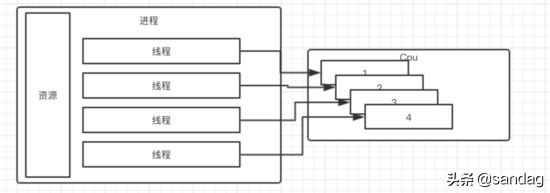
当进程不是多线程程序时,存在于进程当中的唯一线程,便是进程本身运行的代码块。
而当多线程出现在一个进程中时,则多个线程之间共享此进程的资源,并接受操作系统的调度来运行每个线程。
状态
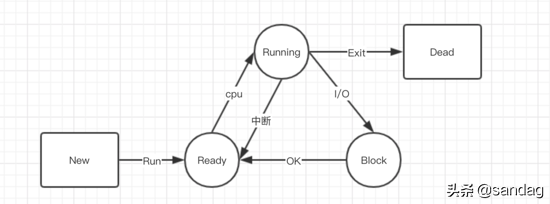
协程
为了了解协程的概念,我们先来了解一下并发和并行。
并行
并行比较好理解,即有多个程序在同时执行,这里的程序指的是操作系统的线程。
每个 cpu 核心,只能在同一个时刻运行一组指令,意味着同一时刻,一个核心上只有一个线程在执行。
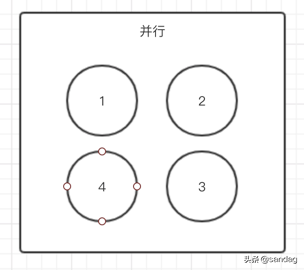
当 cpu 有四个核心时,他只可以 执行4个线程。
并发
想要了解并发,就需要知道 和 。
同步阻塞
当程序中的一个 I/O 操作,会占据比较长的时间,这时候,程序没有被挂起,且一直在等待网络数据传输,无法进行其他操作,这时候就是同步阻塞。
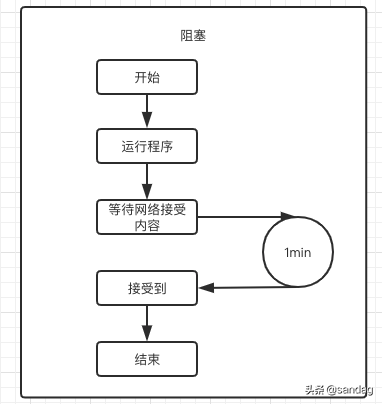
同步的一个概念就是,网络传输完成后也无法告知主程序操作完成,这就导致了主程序:
- 要么只能进行等待 I/O 完成
- 要么轮询去查看是否传输是否已经完成
当然,轮询时候可以进行其他的操作,这时候,就是非阻塞的状态,即 同步非阻塞。
同步非阻塞
非阻塞的概念即主程序可以进行其他的操作。
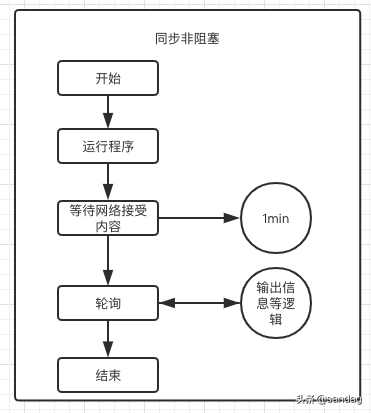
异步阻塞
有同步,就有异步。
而异步阻塞与同步阻塞相同,主程序啥也不干,就等着 I/O 操作完成。
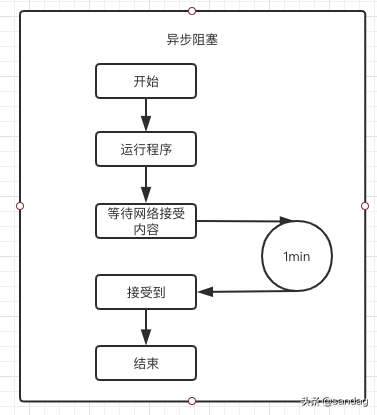
异步非阻塞
异步非阻塞状态,便是并发的关键。
当主程序使用异步 I/O 操作时,并不会影响主程序后续的运行,而当异步 I/O 操作完成后,会主动通知主程序进行其他操作,这样就减少了轮询过程中的资源消耗,专注于其他工作。

并发
而并发就是 异步非阻塞 状态下的一种形式,当程序执行操作 a 时,使 a 的 I/O 异步操作,这时程序去执行操作 b, 在外部看来,a 和 b 时同时被执行的,然而他们只运行在在一个线程当中。
与线程、进程不同的是,协程并不是操作系统物理层面存在的一种程序。
协程是程序级别的,由程序编写者自己操控整个协程的生命周期。这样就实现了类似操作系统操作多线程一样的效果,但是省下了现成的切换中造成的资源消耗。
而通过程序来操纵协程,就造成了cpu 一直在运行,并且是多个协程一直在运行的假象,也就变成了并发。
实例
下面我们通过几个实例来说明,在 python 中的进程、线程和协程的关系。
进程实例
在 python 中我们如何编写多进程的程序呢?
答案是使用模块 multiprocessing 进行实现。
import time
from multiprocessing import Process
class Test(Process):
def __init__(self):
super().__init__()
def run(self):
while True:
print("process b is run")
time.sleep(1)
通过继承 multiprocessing 的 Process ,实现进程类,然后实现 run 方法,即可在此方法中实现进程要运行的内容。
from process_b import Test
import time
if __name__ == "__main__":
t = Test()
t.start()
while True:
print("process a run")
time.sleep(1)
调用方法也非常简单,直接使用 Test 实例化对象,然后调用对象的成员函数 start() 即可。
python3 process_a.py
process a run
process b is run
process b is run
process a run
process a run
process b is run
process b is run
process a run
线程实例
Cpython 中由于存在 GIL ,所以多线程在实际应用中也会变为单核 cpu 上的线程,排队运行。
import threading
import time
class ThreadTest (threading.Thread):
def __init__(self, name):
super().__init__()
self.name = name
def run(self):
while True:
print(f"i am in thread {self.name}")
time.sleep(1)
if __name__ == "__main__":
threads = []
for i in range(4):
t = ThreadTest(i)
threads.append(t)
for t in threads:
t.start()
for t in threads:
t.join()
通过继承 threading.Thread 来实现线程类,然后通过实例化,生成对象,调用对象的 start() 即可启动线程。
运行结果
python3 thread_a.py
i am in thread 0
i am in thread 1
i am in thread 2
i am in thread 3
i am in thread 1
i am in thread 3
i am in thread 0
i am in thread 2
i am in thread 1
i am in thread 3
i am in thread 0
i am in thread 2
i am in thread 1
协程
python3 将 asyncio 加入到了标准库。
import asyncio
import time
async def test(num):
await asyncio.sleep(num)
print(num)
async def run():
tasks = [asyncio.create_task(test(num)) for num in range(4)]
[await t for t in tasks]
def run_main():
asyncio.run(run())
if __name__ == "__main__":
run_main()
运行结果
import asyncio
import time
async def test(num):
await asyncio.sleep(num)
print(num)
async def run():
tasks = [asyncio.create_task(test(num)) for num in range(4)]
[await t for t in tasks]
def run_main():
asyncio.run(run())
if __name__ == "__main__":
run_main()
总结
以上就是本节的所有内容,主要简单地讲解了关于 进程、线程和协程 的概念和例子。


